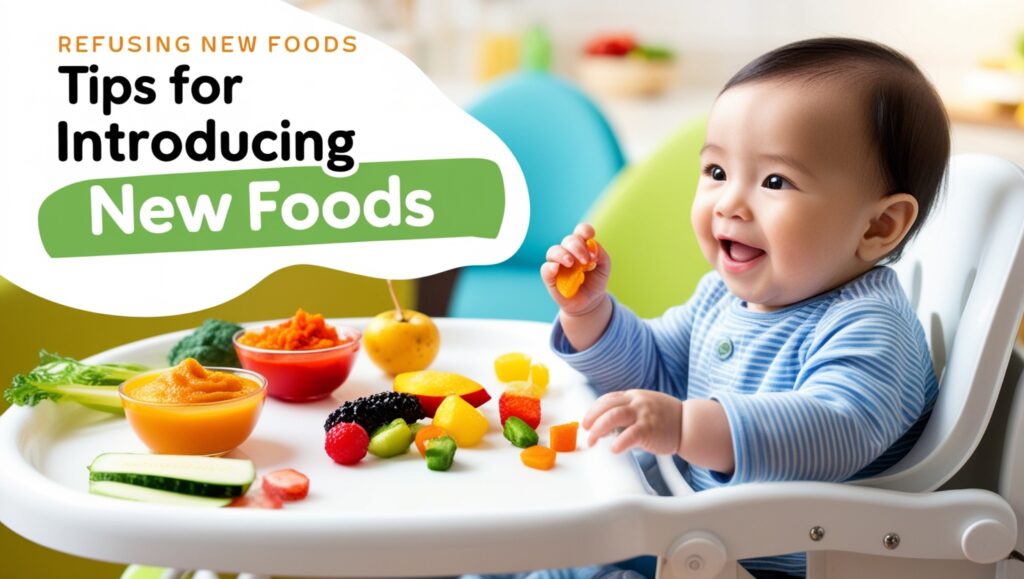Introducing solid foods to your baby is a beautiful milestone, and starting with single-ingredient purees is the safest and easiest way to begin. These purees are simple, nutritious, and tailored to meet your baby’s growing needs. Whether you’re a first-time parent or looking for fresh ideas, this guide covers everything you need to know, including baby recipes, tips, and expert advice to make the transition smooth and enjoyable for both you and your baby.
Why Single-Ingredient Purees Are the Best First Step
When it comes to introducing solids, single-ingredient purees are a trusted choice among pediatricians and nutritionists because:
- Minimizes risk of allergies: By introducing one food at a time, you can easily identify and avoid any allergic reactions.
- Simple and wholesome: These purees are unprocessed and free from additives, offering pure nutrition to your little one.
- Supports your baby’s palate: Gradually introduces babies to the natural taste of foods, preparing them for more complex meals in the future.
When and How to Introduce Single-Ingredient Purees
Signs Your Baby is Ready
The best time to introduce solids is around 4-6 months of age. Look for these readiness signs:
- Ability to sit upright with minimal support.
- Interest in food (e.g., watching you eat or trying to grab food).
- Loss of the tongue-thrust reflex (pushing food out of their mouth).
Step-by-Step Instructions
- Pick a Baby-Friendly Ingredient
Start with simple, easy-to-digest foods such as sweet potatoes, bananas, apples, or avocados. - Cook and Blend
Steam, bake, or boil the ingredient to make it soft, then puree it to a smooth consistency. Add breast milk, formula, or water if needed. - Introduce Gradually
Offer 1-2 teaspoons of puree at a time and wait 3-5 days before introducing another new food to monitor for any reactions. - Make Mealtime Fun
Use colorful baby utensils and ensure a calm, distraction-free feeding environment. Allow your baby to explore and get messy—it’s part of the learning process!
Top Single-Ingredient Purees to Try
1. Velvety Sweet Potato Puree
- Benefits: Rich in beta-carotene and vitamin C.
- Recipe: Steam or bake a small sweet potato, peel, and blend until smooth.
2. Creamy Avocado Puree
- Benefits: Packed with healthy fats for brain development.
- Recipe: Mash a ripe avocado or blend it with a bit of breast milk or formula for extra creaminess.
3. Gentle Apple Puree
- Benefits: High in fiber and easy on little tummies.
- Recipe: Peel, core, and steam an apple. Blend into a smooth puree.
4. Buttery Banana Mash
- Benefits: Naturally sweet and full of potassium.
- Recipe: Mash a ripe banana with a fork until smooth. Serve immediately.
5. Bright Carrot Puree
- Benefits: Full of vitamin A for healthy vision and skin.
- Recipe: Steam or boil carrots, then blend until smooth.
Helpful Tips for Starting Solids
- Keep it smooth: For first-timers, ensure the puree has a smooth, lump-free texture to avoid choking hazards.
- Use baby-sized utensils: A small spoon makes feeding easier and more enjoyable.
- Be patient: Babies may reject new foods at first. Repeated exposure often leads to acceptance.
FAQs About Single-Ingredient Purees
Q: Can I store leftover purees?
A: Yes! Refrigerate purees in airtight containers for up to 3 days or freeze them in ice cube trays for up to 1 month.
Q: How do I know if my baby is allergic to a food?
A: Watch for signs such as rashes, vomiting, diarrhea, or swelling. If you suspect an allergy, stop feeding the food and consult a pediatrician.
Q: What foods should I avoid?
A: Avoid honey (risk of botulism), cow’s milk (not easily digestible), and foods that pose a choking hazard, like whole nuts or grapes.
Advanced Tips for Making the Most of Single-Ingredient Purees
- Make it fresh: Whenever possible, prepare your baby’s food fresh for optimal taste and nutrition.
- Batch cooking: Save time by preparing larger quantities of puree and freezing them in baby-safe containers.
- Add variety: Rotate foods to expose your baby to a wide range of flavors and nutrients.
Bonus Recipes for Single-Ingredient Purees
Pear Puree
- Ingredients: 1 ripe pear
- Instructions: Peel, core, and steam the pear until soft. Blend into a smooth puree.
Pea Puree
- Ingredients: 1 cup fresh or frozen peas
- Instructions: Steam peas until soft. Blend into a fine puree and strain to remove skins, if necessary.
Zucchini Puree
- Ingredients: 1 medium zucchini
- Instructions: Steam or boil zucchini slices until tender, then blend until smooth.
Transitioning Beyond Single-Ingredient Purees
Once your baby is comfortable with single-ingredient purees, you can start combining flavors. For example:
- Sweet potato and apple puree.
- Avocado and banana mash.
- Carrot and pear blend.
These combinations not only expand your baby’s palate but also provide a balanced mix of nutrients.
Conclusion
Starting with single-ingredient purees is a wonderful way to introduce your baby to the joys of solid foods. By choosing wholesome ingredients, preparing them with care, and introducing them gradually, you’ll set the foundation for a lifetime of healthy eating habits. Explore more baby recipes and feeding tips on BabyFeasts.com to make your weaning journey stress-free and enjoyable!

